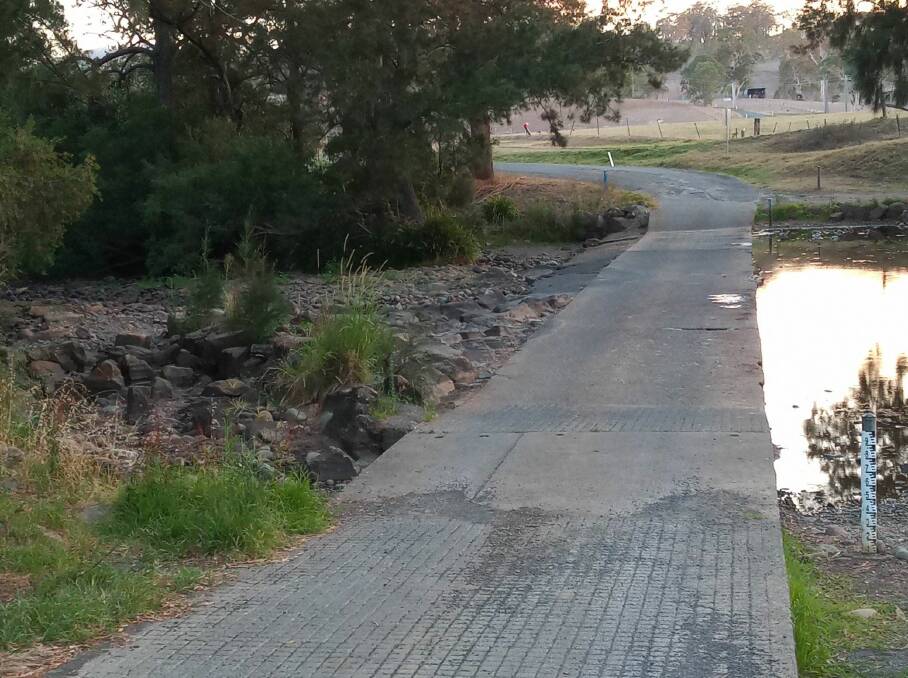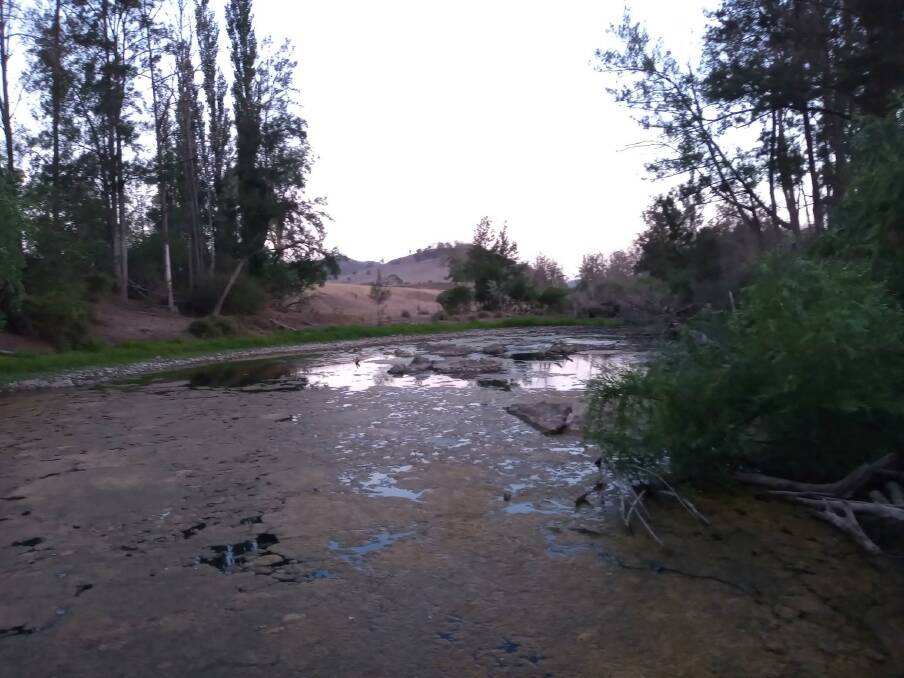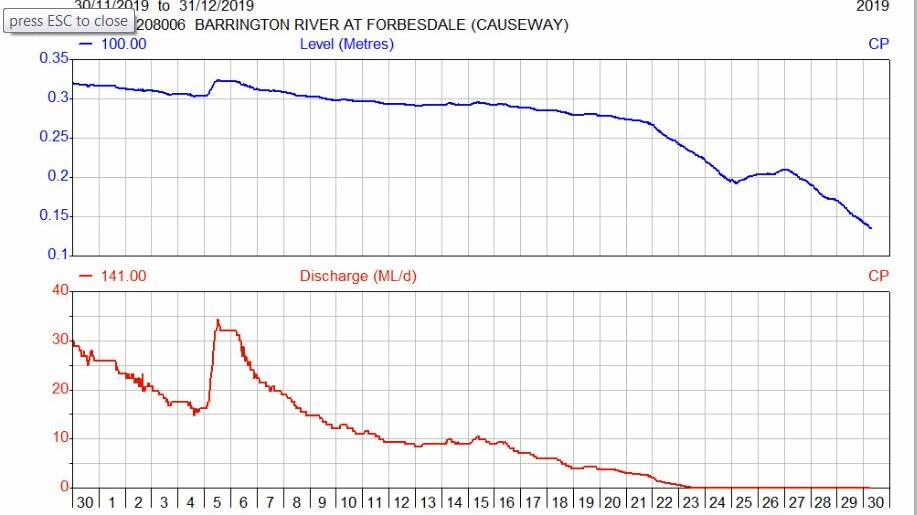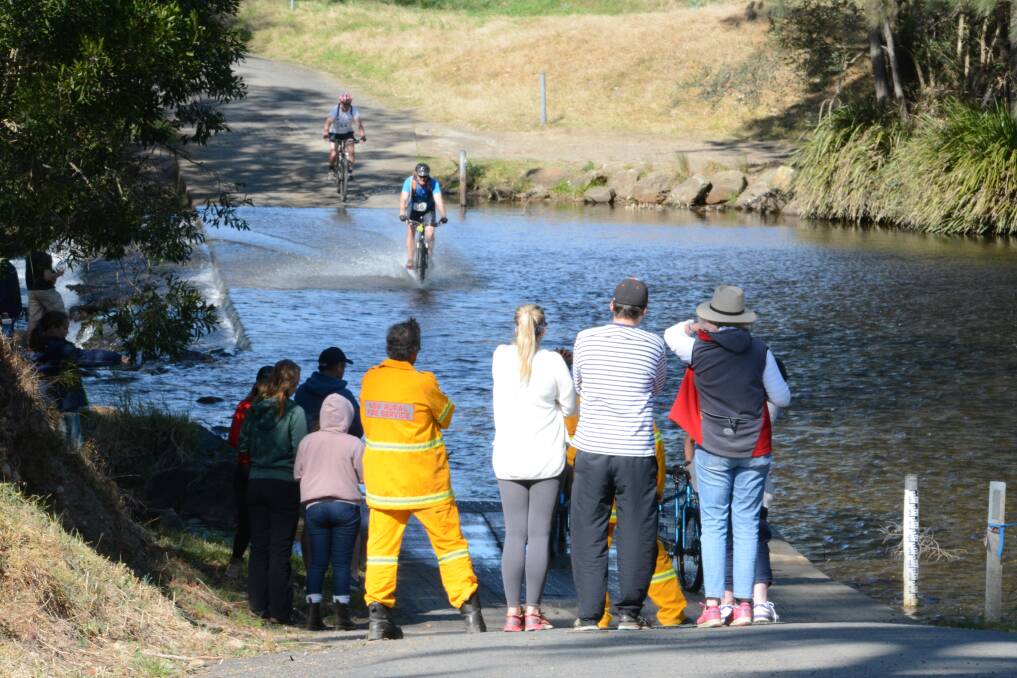
The Barrington River, the source of Gloucester's water supply in the Manning region, has flatlined.
Subscribe now for unlimited access to all our agricultural news
across the nation
or signup to continue reading
According to WaterNSW real-time river flow, Bobs Crossing in the Barrington Tops is registering a meager flow of 0.4 megalitres as of 8am on Monday, December 30.
At Forbesdale, the flow drops off to zero as the riverbed meanders its way toward Relfs Road just before where the pumping station for the town's water supply is located.
The last data available on the website for Relfs Road is a reading of zero megalitres discharge flow from December 16.
The state of Gloucester town water supply has sparked interest on social media with resident, Peter Mclaughlin suggesting MidCoast Council should hold a community meeting about the dwindling water source.
His post on the private Gloucester Community Noticeboard Facebook group on December 29 kicked off a chain of comments by community members about council's handling of the situation.

It was suggested that council started carting water into town on Boxing Day (December 26) and had been doing so at odd hours. Council has confirmed a load of water was trucked in on December 26 as a trial run, however this was before they lost the ability to pump from the river.
As of Monday, December 30, the flow has ceased and council will now be carting water in as required to meet the community's need until the river starts flowing again.
Council has also contacted Gloucester region water carriers to ask them to start drawing water from Krambach, which uses the Manning water source, to help take pressure off Gloucester's water supply.
Since the Mid Coast region entered severe level four water restriction on November 11, council has been clear that the Gloucester region may soon be elevated to emergency level unless there is significant rainfall in the catchment.
As the weeks have passed, the rainfall has been hit and miss around the region, leaving Gloucester without a water source. Just before Christmas, council responded to an ABC report that Gloucester was going to run out of water by indicating that an emergency plan was in place and that the cost of the cartage would be almost completely covered by the NSW Government.

The community chatter on social media not only covered the current water situation, but the need to better plan for future water storage, something that has been on the council agenda since the forced council merger in May 2016.
Gloucester's storage ability is via three water towers, all of which are in a state a disrepair, with some not able to hold full capacity.
But Gloucester has historically survived on ample flow of the Barrington River which has never ceased to flow in recorded history, as stated by council's general manager, Adrian Panuccio.
And Gloucester wasn't in urgent needing of water, so long as the river flow stayed above three megalitres, according to council's director of Infrastructure and Engineering Services, Rob Scott.
In 2017, council was looking at two options for Gloucester's water security, a pipeline to Krambach or an off-river storage dam. After running the figures, council determined the most financially feasible option was to build a dam, and as council declared the first set of water restrictions in early 2019, it was working on a concept plan for the entire Gloucester water network to be brought to the community for consultant once ready.
As of December 2019, there has been no communication with the community about this matter.



